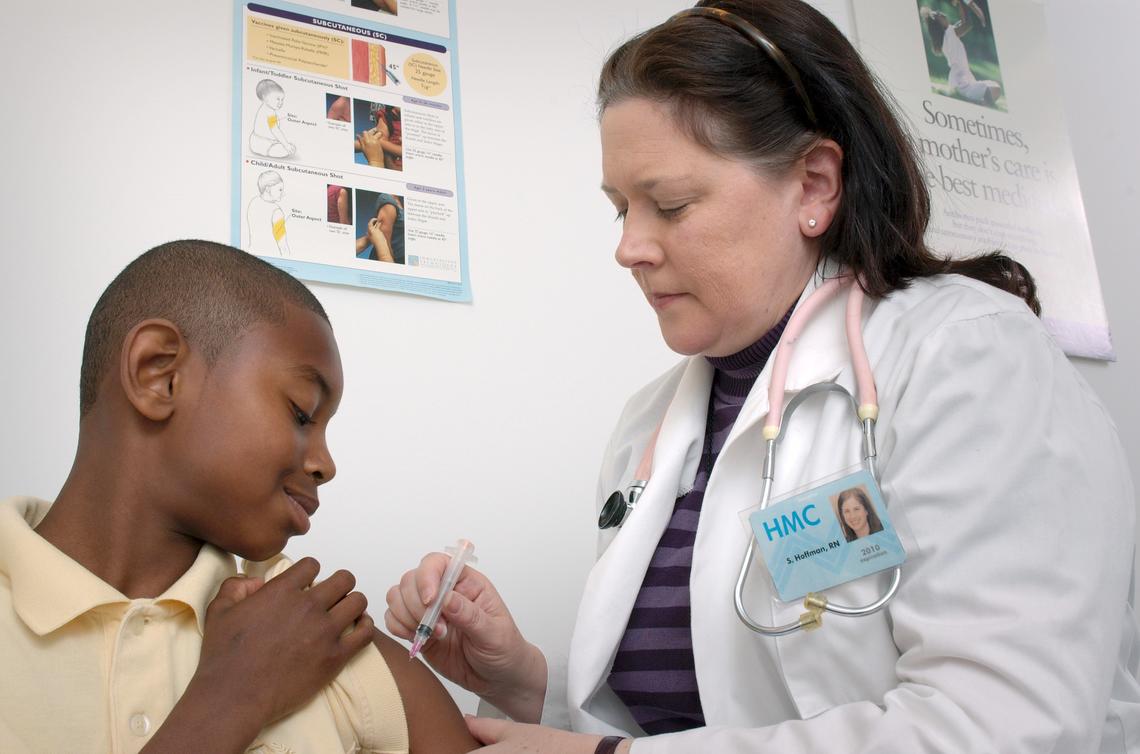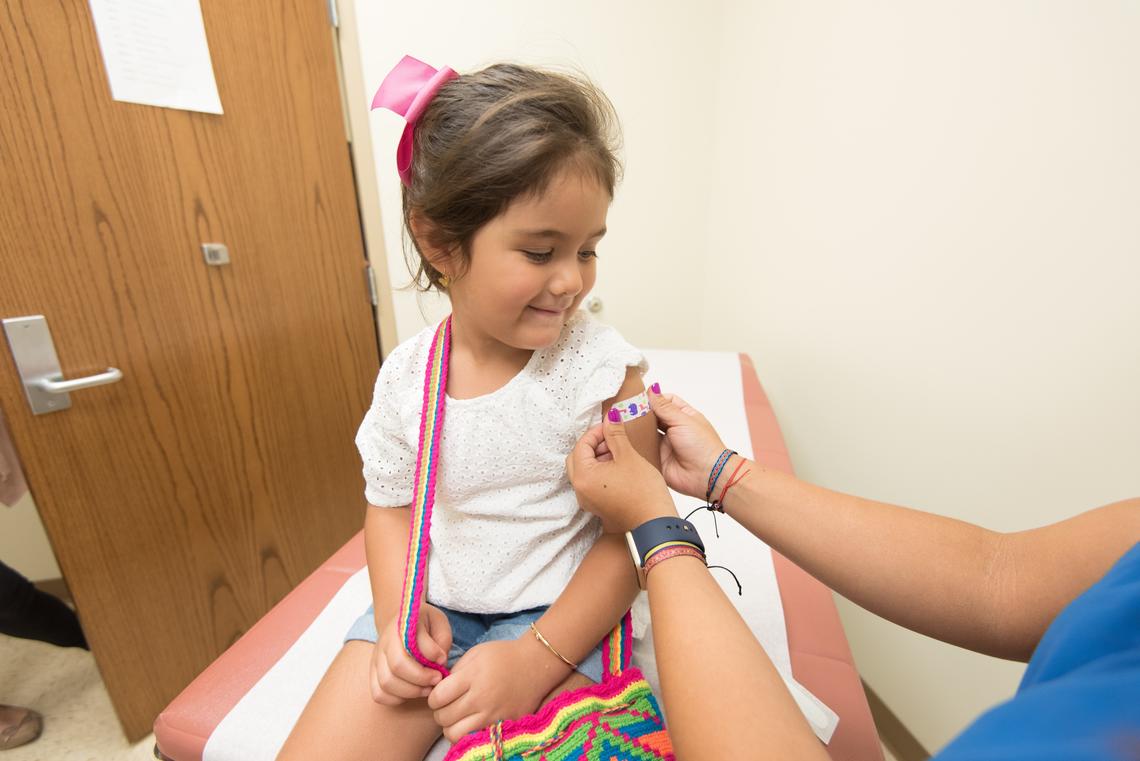May 1, 2020
Fear of needles: 5 simple ways to ease vaccination pain for your child (and yourself)

Vaccinations are one of the most common reasons for injections in children. But for people who fear needle pain, the mere mention of a vaccination evokes immense dread and bad childhood memories of painful injections at the doctor’s office or at school.
Indeed, 20-50 per cent of kids and 20-30 per cent of adults report significant needle fears. People who are afraid of needles are less likely to get the flu shot or to have their children vaccinated. They are also more likely to avoid medical care. This means that, unless we develop a needle-free vaccine, managing pain and fear from needles is critical to the success of vaccines — including an eventual coronavirus vaccine.
But don’t fear. As a psychologist with expertise in pain management, I know there is a wealth of research clearly showing how to prevent pain and soothe your needle fears. These five strategies are simple, easy to implement and helpful for all ages — including babies, children and adults. These science-backed strategies are recommended by the Canadian Paediatric Society and the World Health Organization, among others.
1. Plan ahead and be honest

Let kids know about the vaccination a few days ahead of time, and create a comfort care plan
James Gathany/Centers for Disease Control and Prevention
Think ahead about what strategies you plan to use to manage fear or pain during the vaccination. Parents often avoid telling kids they are going for a needle until the very last minute to avoid making them anxious. This often has the opposite effect and causes anxiety to skyrocket, along with distrust.
It’s usually best to tell kids a few days ahead and use that time to create a comfort care plan together with strategies they can use to manage worry and pain. Handouts summarize effective pain management strategies in one place to make vaccinations easy peasy when the time comes.
For parents, assessing and managing their own anxiety will enable them to best support their child. Plan to be with your child during the vaccination unless they are older and request to be on their own.
2. Use numbing cream

Heather Hazzan, SELF Magazine/flickr
Also called topical anesthetics, these creams help to numb the skin where the needle will be injected. Topical anesthetics (Emla, Ametop and Maxilene) can be purchased over the counter from any pharmacy and come as a patch or in a tube.
They typically need to be applied to the skin 30 to 60 minutes before the needle, so applying the numbing cream is often something that can be done at home, and later removed at the clinic. Insider tip: Some kids don’t like having the patch removed because it’s like taking off a bandage. Instead, you can apply the numbing cream and wrap the area with cling wrap.
To be sure the numbing cream is applied in the right place on the body, check ahead with a pharmacist or health-care provider to find out where the shot will be injected.
3. Sit upright
It’s best to sit up in a comfortable, relaxed and supported position during the vaccination. Kids can sit on a parent’s lap and be held in a hug either facing the parent or to the side, often called comfort positions. Lying down or being held down can increase fear and pain, and create a sense of loss of control.
Infants can be cuddled skin-to-skin, clothed only in a diaper, held facing inward against a parent’s bare chest. For kids two years and younger, breastfeeding or use of a sweet-tasting solution, such as a small amount of sugar water, is also recommended.
Kids and adults who typically feel faint when getting needles can use a technique called muscle tension to help raise their blood pressure to feel better. To use this technique, sit or lie down and tighten your arm, leg and stomach muscles for about 15 seconds until your cheeks feel flush. Then release tension for 20 to 30 seconds (without fully relaxing) before tensing again and repeating until the needle is over or you stop feeling faint.
4. Use distraction
Draw attention away from the pain before and during the injection by focusing on something fun, engaging and interactive. Playing games or listening to music on a smartphone is an easy, effective tool for managing pain and distress, and most people have it right in their pocket!
Although high-tech things like virtual reality help, low-tech distractions like talking to someone or imagining something fun work too. Taking a few deep breaths can also help maintain calm and minimize pain. To make it easier for kids, have them blow a pinwheel or bubbles.
For parents, try to avoid reassuring your child. Although it’s instinct, saying things like, “I’m sorry” or “It will be over soon” can actually increase pain and distress by inadvertently signalling to the child that there’s something to worry about it.
5. Talk about what went well

Talking about the experience can help make the next vaccination easier
Scott Housley/Centers for Disease Control and Prevention
There’s more you can do even when the vaccination is over. Remembering and talking about what went well after the fact — even if it wasn’t perfect — helps make it less stressful and less painful next time. Plan something fun to celebrate and remember a job well done!
If you or your child are so afraid of needles that you try to avoid them at all costs, you may benefit from additional help. In this case, exposure-based therapy delivered by a trained mental health professional is recommended ahead of time in order to benefit most from the five simple strategies discussed above.
Even though these strategies are easy, science-based and widely recommended, they are unfortunately not always used. Our team at Solutions for Kids in Pain (SKIP) is working hard to improve children’s pain management by partnering with researchers, parents and caregivers, health-care providers, children’s health-care institutions and more than 100 other organizations. Our goal is to ensure that information about children’s pain gets into the hands of those who need it faster.
During World Immunization Week, let’s remember that #VaccinesWork and #ItDoesntHaveToHurt.
This story is part of a series produced by SKIP (Solutions for Kids in Pain), a national knowledge mobilization network whose mission is to improve children’s pain management by mobilizing evidence-based solutions through co-ordination and collaboration.





